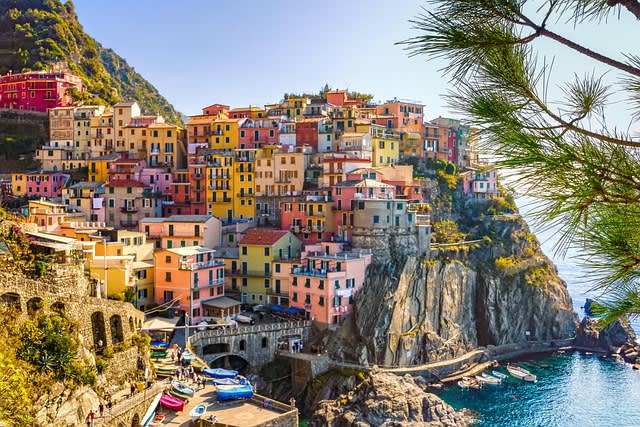Italian Translation

Italian Translation and Localization
TrueLanguage offers timely, precise Italian translation and localization services. We can handle virtually any type of translation project. Our team of professional linguists includes native speakers of Italian and certified subject matter experts who can perfectly translate material following your exact specifications. We use cutting-edge translation and project management tools and follow ISO 9001 standards, guaranteeing efficient, high-quality, and authentic results.
Dall’italiano all’inglese
Language Facts and Information
Italian Snapshot
Italian is a Romance language spoken by approximately 85 million people worldwide, ranking it as the 21st most spoken language globally. It is primarily spoken in Italy, San Marino, Vatican City, and Switzerland, with smaller communities in Croatia, Slovenia, and Malta. The Italian writing system is a shallow orthography, characterized by a high degree of consistency between letters and sounds, and is considered to be close to a phonemic orthography. Italian has a rich history of dialects and regional variations, with many local evolutions of spoken Latin pre-dating the establishment of Italian. These dialects are considered sister languages to Tuscan, which is the historical source of Italian and can be quite distinct from each other, with some belonging to different linguistic branches of Romance. However, despite the diversity of dialects, Standard Italian is recognized as the official language of Italy.
Italian Facts and Trivia
Where it’s Spoken
Italian is primarily spoken in Italy, where it is the official language and the mother tongue of most of the population. It is also spoken as a second language by a significant number of people in neighboring countries such as Switzerland, San Marino, and Vatican City. Outside of Italy and its neighboring countries, expatriate communities also speak Italian in countries such as Argentina, Brazil, Canada, and the United States. Italian is also recognized as a minority language in Croatia, Slovenia, and Romania. Additionally, Italian is widely studied as a second language in many countries around the world, particularly in Europe and South America.
Global Statistics
Italian is a widely spoken language with approximately 85 million speakers worldwide, ranking it as the 21st most spoken language globally. It is the official language of Italy, San Marino, and Vatican City and one of Switzerland’s official languages. Italian is one of the six official languages of the United Nations and the European Union. Italy has a strong cultural influence on the world in areas such as art, music, fashion, and cuisine. Italian opera is a popular genre worldwide. Italian is widely taught as a second language in many countries, with over 250 colleges and universities offering Italian language courses in the United States alone.
Impact of Italian Worldwide
The Italian language has had a significant impact globally, particularly in the areas of culture, art, and cuisine. Italy has a rich artistic and cultural heritage, and Italian has been the language of some of the world’s greatest works of art, music, and literature. Many of the greatest masterpieces of Western art, such as Leonardo da Vinci’s Mona Lisa and Michelangelo’s Sistine Chapel, were created in Italy and inspired by Italian culture.
In addition, Italian is an official language of the European Union, and Italy is a significant player in the global economy. Italy is home to many world-renowned fashion, design, and automotive manufacturing companies, and Italian is an important language for international trade and business.
Regional Variations
The Romance dialects of Italy are regional variations of spoken Latin that existed before the establishment of Italian. Therefore, they are considered sister languages to the Tuscan language, which was the historical source of Italian. These dialects can differ significantly from Italian and from each other, with some belonging to distinct linguistic branches of Romance. However, twelve groups are recognized as “historical language minorities” and are officially acknowledged as separate minority languages under the law. Meanwhile, Corsican, a language spoken on the French island of Corsica, is closely related to medieval Tuscan, from which Standard Italian derives and evolved.
Regional Italian variations of Standard Italian, called Regional Italian, are spoken throughout Italy. Regional differences can be recognized by various factors: the openness of vowels, the length of the consonants, and the influence of the local language (for example, in informal situations andà, annà, and nare replace the standard Italian andare in the area of Tuscany, Rome, and Venice respectively for the infinitive “to go”).
Origin and History
In the Middle Ages, Latin was the primary written language in Europe, even though the vast majority of people were illiterate, and only a few individuals were proficient in the language. In Italy, as in most parts of Europe, locals spoke a regional vernacular instead. These vernaculars, also known as dialects, gradually evolved from Vulgar Latin over several centuries without the influence of formal standards or instruction. These dialects are not considered variants of standard Italian, which began as one of these regional languages, but are sister languages to Italian.
Summary
Since the Italian language is constantly evolving, you must have informed and highly experienced professional linguists for producing accurate and culturally appropriate translations. At present, Italian features approximately 500,000 words and adopts or adds 600 new words each year. Will you need an Italian translation that will easily be understood in all regions where the language is spoken? Or do you rather require a regionally specific translation? Select either our TrueGlobal or LocalVoice approach as appropriate.
Resources
Consider a Partnership with TrueLanguage
Are you looking for a partnership with a language service provider? If so, you may wish to consider TrueLanguage. We offer ISO-Certified state-of-the-art business translation services that are on budget, on time, and to your exact specification. Every time. Or perhaps you’re just looking for a cost-free, no-obligation estimate for your next translation project. Either way, we’d love to hear from you!


